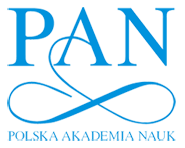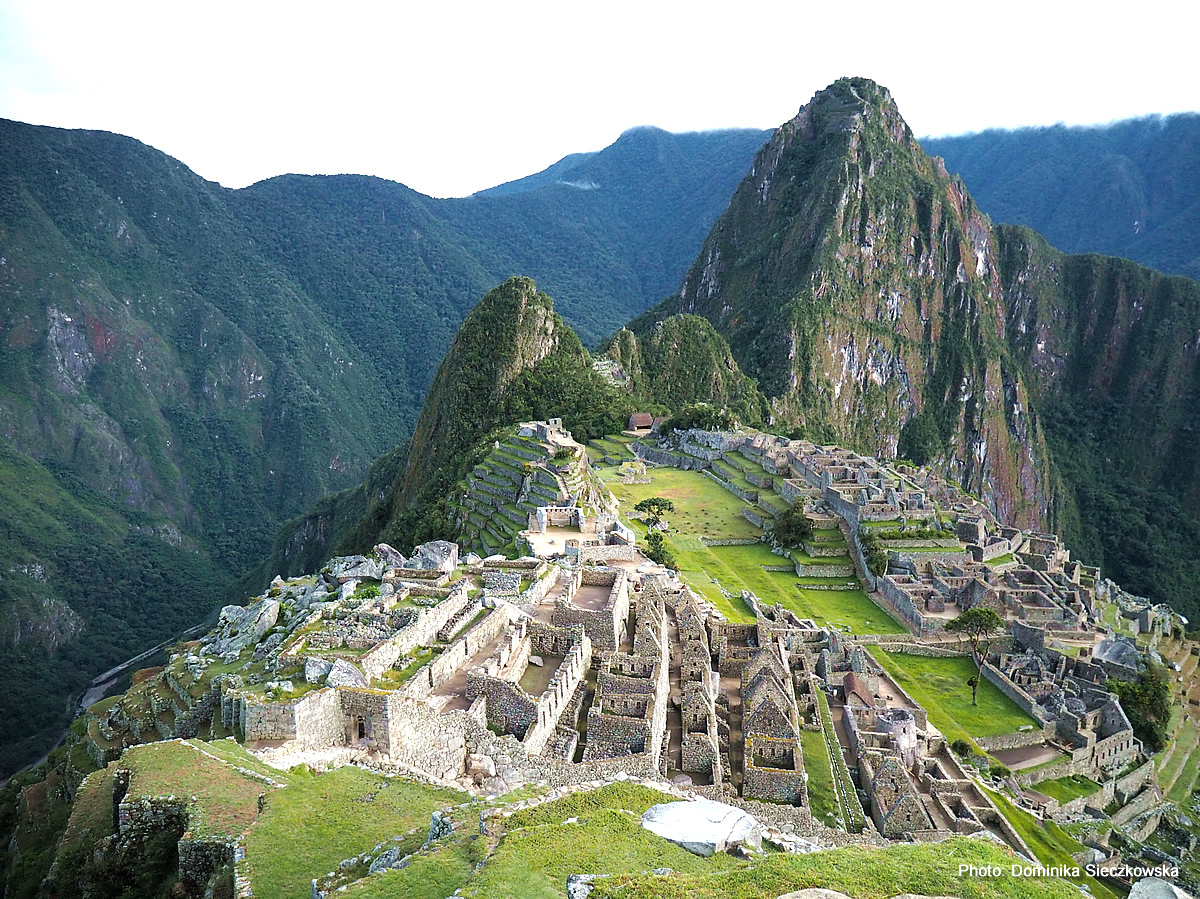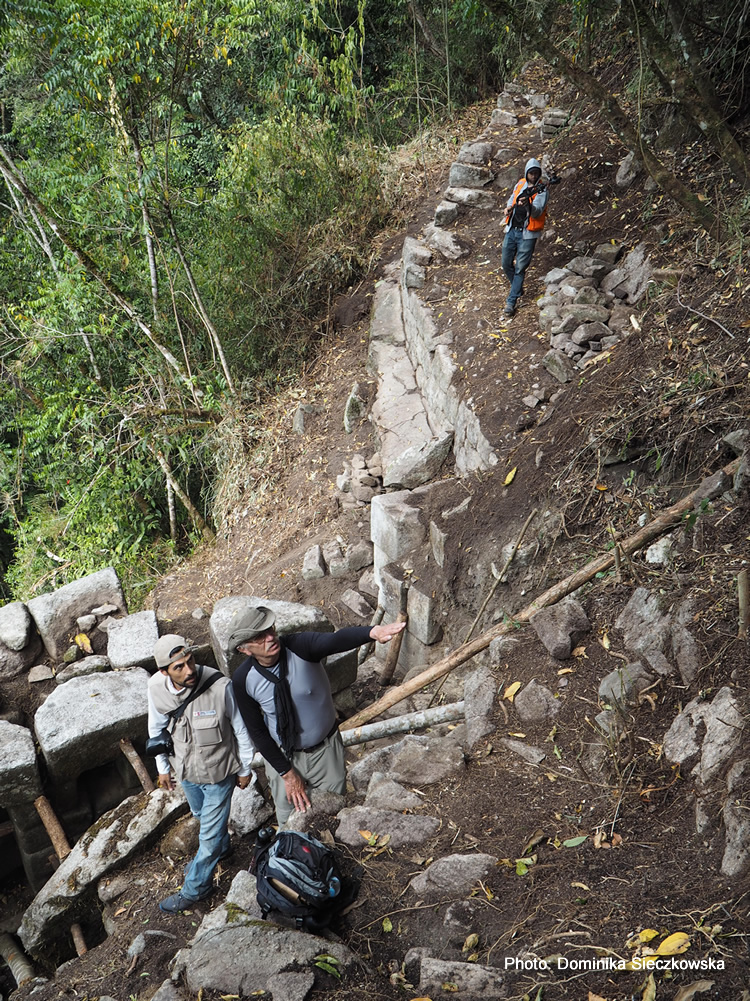Commission on Archaeology of the New World, Committee on Pre- and Protohistoric Sciences, Polish Academy of Sciences
Preliminary information on current projects carried out by Polish researchers.
Projects on New World Archaeology, according to the centres (in alphabetical order)
I/ Cracow
Jagiellonian University
Research on the archaeology of the Americas at the Jagiellonian University was initiated in the 1970s by Andrzej Krzanowski (first Polish archaeological research in Peru) and Janusz Kozłowski (research on preceramic cultures of the Caribbean area).
Department of Archaeology of the New World, Institute of Archaeology, Jagiellonian University. Currently, the Department is composed of Dr. Jarosław Źrałka, Prof. UJ, Dr. Radosław Palonka, Dr. Michał Wasilewski, and Dr. Katarzyna Radnicka (the following is a description of the research according to the Department's website, used with the permission of the Department's Management).
The Department's most important project is the research conducted since 2006 on the ancient Maya city of Nakum and several smaller neighboring sites located in the north-eastern part of Guatemala. The work of Polish archaeologists has yielded many spectacular results, including the discovery of unhewn royal tombs, a unique water canal with ritual and practical functions, one of the oldest steam baths in Mesoamerica, and new relief stelae and inscriptions which shed new light on the history of Nakum itself and the surrounding region. Recent projects in Guatemala include excavations in Chajul (Guatemalan highlands, led by Magdalena Krzemień, M.A.) and the conservation and documentation of colonial-period frescoes found in private Indian (Maya Ixil) houses in the same village.
In cooperation with researchers from the Nicolaus Copernicus University and the University of Warsaw, an underwater archaeology research project in the Peten Itza Lake, led by Magdalena Krzemień MA, is also being carried out.
Since 2011 the Sand Canyon-Castle Rock Archaeological Project has been conducted in Colorado (USA), headed by Radosław Palonka, Ph.D. The research is conducted in south-western Colorado, in the so-called Mesa Verde region, in the legally protected area of the Canyons of the Ancients National Monument. It focuses on the analysis of settlement and socio-cultural changes in the pre-Columbian Pueblo Indian culture and the documentation of rock art (petroglyphs and paintings).
Under the auspices of the Department of Archaeology of the New World, research is also conducted in Peru, at the site of Cerro Colorado (Chancay culture), headed by Łukasz Majchrzak M.A., a collaborator of Andrzej Krzanowski Ph. The results of this work are presented in a series of articles published together with the Peruvian archaeologist Pieter Van Dalen.
Dr. Hab. Andrzej Krzanowski, one of the pioneers of Andean archaeology in Poland, associated successively with the Latin America Laboratory (Institute of Geography, Jagiellonian University), then with the Latin America Department (American Studies, Jagiellonian University). Now retired but is still professionally active, he published in 2017 a collection of texts entitled: "Essays on archaeology and ethnology of Peruvian Andes / Ensayos sobre arqueologia y etnologia de los Andes Peruanos."
Dr. Krzysztof Tunia, from the Institute of Archaeology and Ethnology of the Polish Academy of Sciences, a participant in the Polish Scientific Expedition to the Andes (seasons 1978 1985 and 1987), in addition to his work in Poland, mainly on the Neolithic period, continues his interest in American studies. Among other things, he was co-editor of a special volume (v. 39, 2019) of the journal Estudios Latinoamericanos dedicated to Andrzej KrzanowskiRead more:
www.nakumproject.pl
Recent publications:
Majchrzak, Łukasz, Pieter van Dalen Luna, i Tomasz Goslar. „RADIOCARBON DATING OF PRE-COLUMBIAN PERUVIAN FUNERARY BUNDLES OF THE CHANCAY CULTURE. " Radiocarbon 63, nr 1 (luty 2021): 177–93. https://doi.org/10.1017/RDC.2020.110.
Palonka, Radosław, Kathleen O’Meara, Katarzyna Ciomek, i Zi Xu. „Ancestral Pueblo Settlement Structure and Sacred Landscape at Castle Rock Community, Colorado.” Antiquity 94, nr 374 (kwiecień 2020): 491–511. https://doi.org/10.15184/aqy.2020.31.
Źrałka, Jarosław, Christophe Helmke, Bernard Hermes, Wiesław Koszkul, Carmen Ting, Ronald Bishop, i Dorota Bojkowska. „POLITICAL ALLIANCES AND TRADE CONNECTIONS OBSERVED IN THE CERAMIC RECORD OF THE CLASSIC PERIOD: THE PERSPECTIVE FROM THE MAYA SITE OF NAKUM, GUATEMALA”. Ancient Mesoamerica 31, nr 3 (ed 2020): 461–75. https://doi.org/10.1017/S0956536120000152.
Krzanowski, Andrzej. Essays on Archaeology and Ethnology of Peruvian Andes/Ensayos sobre Arqueologia y Etnologia de los Andes Peruanos. Jagiellonian University Press, 2016 [2017]. https://www.cambridge.org/core/books/essays-on-archaeology-and-ethnology-of-peruvian-andesensayos-sobre-arqueologia-y-etnologia-de-los-andes-peruanos/46F428D5E4BBE6703FD0C52475F02AD5
II/ Poznań and Toruń
- Adam Mickiewicz University in Poznań
Two prominent researchers are indirectly connected with the Adam Mickiewicz University. Boguchwała Tuszyńska, Ph.D., who completed her Ph.D. thesis entitled "The position of a woman in the Maya world in the classical period (250 - 900 AD)", actively participates in scientific conferences and publishes in foreign journals. Her popular science articles, which are highly acclaimed by the public, are also published in "Live Archaeology." Dr. Tuszyńska is also the coordinator of the Maya Hieroglyphic Writing online course at the University of Warsaw, one of the longest-established institutions for studying ancient Maya writing and language in Europe.
Epigraphy is also the field of study of Dr. Kajetan Jagodzinski, an employee of the Faculty of European Culture at UAM. Dr. Jagodzinski prepared part of his doctoral dissertation "The Role of the Artist in Maya Society of the Late Classic Period" while on scholarship at the Universidad Complutense de Madrid, under the special supervision of the prematurely deceased Alfonso Lacadena, a great Spanish scholar of Maya epigraphy.
More:
"Maiz and Propaganda - A Conversation with Boguchwała Tuszynska," https://przekroj.pl/nauka/kukurydza-i-propaganda-lukasz-kaniewski
https://przedkolumbem.blogspot.com/
- Nicolaus Copernicus University in Toruń
Andrzej Karwowski, who defended his doctoral thesis on ancient Maya culture at the Nicolaus Copernicus University in Toruń, has been researching the Bolivian Amazon since 2006 (currently in cooperation with the "Clean World" foundation from Poznań).
Recent publications:
Karwowski A., Estilos de cerámica de la región sur del bajo río Beni en tiempos prehispánicos en el contexto de investigaciones en Uaua-uno y Copacabana, Chachapuma. Revista de Arqueología Boliviana 10: 5-18 (2021).
Jagodziński, Kajetan, Rola artysty w społeczeństwie Majów późnego okresu klasycznego: na podstawie analizy epigraficznej zachowanych sygnatur skrybów i rzeźbiarzy. Poznań: Wydawnictwo Naukowe UAM, 2019.
Tuszyńska, Boguchwała i Kajetan Jagodziński. „JĘZYKOWO-KULTUROWE KONSEKWENCJE KONTAKTU MAJÓW Z HISZPANAMI”. Scripta Neophilologica Posnaniensia 19 (2019): 281–97. https://doi.org/10.14746/snp.2019.19.19.
III/Warsaw
University of Warsaw
An important unit is the Centre for Andean Research at the University of Warsaw, headed by Professor Mariusz Ziółkowski. This research center runs and coordinates a group of archaeological projects, as well as two units of the Faculty of Archaeology at the University of Warsaw: The Department of Archaeology of the Americas (headed by UW professor Dr. Miłosz Giersz) and the Laboratory of Archaeology of the Pacific Coast and Far East (headed by Dr. Maciej Sobczyk).
- The Centre for Andean Studies of the University of Warsaw
The Center for Andean Research has been conducting several projects related to the Machu Picchu site (in collaboration with the Machu Picchu Park) and other sites in the Urubamba Valley. Professor Ziółkowski's team (in collaboration with Professor J. Kościuk) has made important discoveries related to the Mirador de Inkaraqay site - a precision astronomical observatory near Machu Picchu, along with investigations on the nearby unique ceremonial complex at Chachachamba (directed by Dominika Sieczkowska). The Center also manages the project of bioarchaeologist Dagmara Socha's study (in cooperation with the Museo Santuarios Andinos in Arequipa) on the mummified remains of children sacrificed by the Incas. As part of cooperation with research institutions outside the Andean region, geoarchaeological research is also conducted in Guatemala (supervised by Michał Gilewski, in collaboration with Parque Arqueológico Nacional Tak'alik Ab'aj).
- Department of Archaeology of the Americas, Faculty of Archaeology, University of Warsaw
Field research by the Department of Archaeology of the Americas is currently being conducted at three sites. The first is Castillo de Huarmey, Peru, where in 2013, a team led by Professor Miłosz Giersz and Dr. Patrycja Prządka-Giersz (Artes Liberales UW) made a significant and rare discovery of an intact monumental tomb with elite representatives of the Huari culture. This spectacular find included 58 mummified bodies and 1200 artifacts, including silver bowls, gold earrings, and bronze weapons. The data acquired has allowed for interdisciplinary analyses, multifaceted inferences, and interpretations about Huari social life. Important research of the Department has been carried out since 2016 by Dr. Janusz Woloszyn has carried out in-depth documentation and research at the site of Toro Muerto, Peru, one of the largest (more than 50 km2) important complexes of rock art in the Americas. In El Salvador, research on the interesting, almost unexplored site of San Isidro (dept. Sonsonate) is led by Dr. Jan Szymański. According to the first research results, this complex may be one of the most important archaeological sites in El Salvador.
- Laboratory of Pacific Coast and Far East Archaeology of the Faculty of Archaeology, University of Warsaw
The laboratory conducts archaeological research in Peru and Chile (on Easter Island). The head of the laboratory, Maciej Sobczyk, Ph.D., runs two research projects: "He Henua Iraro - Rapa Nui. The Underground World of Rapa Nui” (a project carried out in cooperation with the Centre for Andean Research of the University of Warsaw, the MAPSE Rapa Nui Museum, Mau Henua Rapa Nui) and the project “Apu Coropuna, high mountain archaeology of the southern Peruvian Andes” (a project carried out in cooperation with the Centre for Andean Research of the University of Warsaw and Universidad Católica de Santa María, Arequipa).
- Laboratory of Palaeogenetics and Conservation Genetics of the University Centre for New Technologies (CENT)
The laboratory, headed by Prof. Piotr Węgleński, has a team of young researchers, Dr. Mateusz Baca, Dr. Martyna Molak-Tomsia, Dr. Danijela Popovic, specializing, among others, in the problem of palaeogenetic studies of pre-Columbian populations from the Andes area. This research is carried out jointly with the Centre for Andean Studies of the University of Warsaw. The last significant achievement of this team was the publication of the research results on the population of the Tiwanaku culture in the prestigious journal Science Advances.
- Other Units of the University of Warsaw
Apart from the above mentioned, archaeological research is carried out in other departments/units of the University of Warsaw.
- At the Faculty of Artes Liberales a group of researchers (associated with the interdisciplinary research team of professor Justyna Olko) includes archaeologist Patrycja Prządka-Giersz, PhD, known as the co-director of research at Castillo de Huarmey. In the same team Agnieszka Hamann conducts scientific work related to archaeology research on ancient language using epigraphic sources and methods of cognitive linguistics.
- The Institute of Iberian and Ibero-American Studies at the University of Warsaw (Department of History and Cultures of Spain and Iberoamerica) employs Dr. Rafał Reichert, who is involved in archaeological and historical research, while two doctoral students Karolina Juszczyk and Daniel Prusaczyk carry out research projects.
- In the Institute of Musicology at the University of Warsaw prof. Anna Gruszczyńska-Ziółkowska, Ph.D., is conducting archaeomusicological research on the pre-Columbian cultures of Peru.
More about the research of scientists from the UW:
http://www.ceacusco.pl/en/projects/peru-bolivia.html
https://www.archeologia.uw.edu.pl/katedra-archeologii-ameryk/
https://www.livescience.com/64845-inca-ceremonial-baths-archaeology.html
Recent publications by researchers from the University of Warsaw:
Danijela Popović, Martyna Molak, Mariusz Ziółkowski, Alexei Vranich , Maciej Sobczyk , Delfor Ulloa Vidaurre , Guido Agresti , Magdalena Skrzypczak , Krzysztof Ginalski,Thiseas Christos Lamnidis, Nathan Nakatsuka, Swapan Mallick and Mateusz Baca. "Ancient genomes reveal long-range influence of the pre-Columbian culture and site of Tiwanaku", Science Advances 24 Sep 2021, Vol 7, Issue 39, DOI: 10.1126/sciadv.abg7261
Ziółkowski, Mariusz, Jose Bastante Abuhadba, Alan Hogg, Dominika Sieczkowska, Andrzej Rakowski, Jacek Pawlyta, i Sturt W. Manning. „WHEN DID THE INCAS BUILD MACHU PICCHU AND ITS SATELLITE SITES? NEW APPROCHES BASED ON RADIOCARBON DATING”. Radiocarbon 63, nr 4 (sierpień 2021): 1133–48. https://doi.org/10.1017/RDC.2020.79.
Rafał Reichert 2021 „Od Cortesa do Bolivara. Zarys dziejów wojskowych w hiszpańskiej Ameryce kolonialnej”, Wydawnictwa PWN, Warszawa.
Socha, Dagmara M., Johan Reinhard, i Ruddy Chávez Perea. „Inca Human Sacrifices on Misti Volcano (Peru)”. Latin American Antiquity 32, nr 1 (marzec 2021): 138–53. https://doi.org/10.1017/laq.2020.78.
Druc, Isabelle, Miłosz Giersz, Maciej Kałaska, Rafał Siuda, Marcin Syczewski, Roberto Pimentel Nita, Julia M. Chyla, i Krzysztof Makowski. „Offerings for Wari Ancestors: Strategies of Ceramic Production and Distribution at Castillo de Huarmey, Peru”. Journal of Archaeological Science: Reports 30 (1 kwiecień 2020): 102229. https://doi.org/10.1016/j.jasrep.2020.102229.
Wołoszyn, Janusz Z., Liz Gonzales Ruiz, i Andrzej Rozwadowski. „The Petroglyphs of Toro Muerto: New Documentation and Discoveries at the Largest South American Rock Art Complex”. Antiquity 93, nr 372 (grudzień 2019). https://doi.org/10.15184/aqy.2019.200.
IV/ Wroclaw
1. University of Wroclaw
The University of Wroclaw is conducting archaeological research in southern Peru, covering the Pacific coast and the river valleys of the Arequipa department. The research is led by Prof. Józef Szykulski, together with a group of collaborators from the University of Wrocław (Jakub Wanot, Ewa Bewziuk, Karolina Krajewska and others, including Prof. Karol Piasecki, PhD, Dr. Tomasz Kołomański and other researchers from the University of Poznań, Universidad Católica de Santa María in Arequipa, Universidad Central in Bogota, Jagiellonian University, University of Łódź and the Archaeological Museum in Głogów.
The research was financed by funds from the 7th Framework Programme of the European Union (the Tambo project was then coordinated by Prof. Jan Burdukiewicz of the University of Wrocław), the Ministry of Science and Higher Education, the Ministry of Culture and National Heritage, the Bank Zachodni WBK Foundation (Santander Universidades Programme), the Universidad Católica de Santa Maria in Arequipa, and statutory funds of the University of Wrocław.
- Wrocław University of Science and Technology
Research on the Pre-Columbian sites at the Wrocław University of Science and Technology has been carried out by researchers led by Professor Jacek Kościuk from the Department of History of Architecture, Art and Technology at the Faculty of Architecture (together with Professor Rafał Czerner, Dr.-Ing. Bartłomiej Ćmielewski, Dr.-Ing. Anna Kubicka) using, among others 3D laser scanning and photogrammetric documentation techniques
These various types of research and conservation work were carried out in collaboration with archaeologists from the University of Warsaw.
- Institute of Archaeology and Ethnology, Polish Academy of Sciences, Wrocław branch
At the Research Centre for Late Antiquity and Early Medieval Culture of the Institute of Archaeology and Ethnology of the Polish Academy of Sciences, MA Sylwia Siemianowska, who specializes in medieval ceramics, in cooperation with researchers from the University of Warsaw, prepared her Ph.D. thesis on ceramics from the Inca oracle and administrative center of Maucallacta (Pampacolca District, province of Castilla, Arequipa)
Read more:
Recent publications:
Szykulski, Józef, i Jakub Wanot. „The Tiwanaku Tradition within the Tambo Valley, Southern Coast of Peru: Interpretation of Burial Contexts from La Pampilla 1”. Latin American Antiquity 32, nr 3 (wrzesień 2021): 577–94. https://doi.org/10.1017/laq.2021.18.
Kościuk, Jacek, i Mariusz Ziółkowski. „The Torreón of Machu Picchu: An Astronomical Observatory?” Teka Komisji Architektury, Urbanistyki i Studiów Krajobrazowych 16, nr 4 (30 grudzień 2020): 7–31. https://doi.org/10.35784/teka.2451.
Sadowski K., Siemianowska S., Sobczyk M. “Algunos aspectos del material cerámico del sitio de Maucallacta-Pampacolca, (dep. Arequipa, Perú). El análisis preliminar de la investigación petrográfica sobre la cerámica ceremonial de los basurales” Actas I Congreso Internacional de arqueologia del area centro sur andina, 250-265, (2018), Arequipa-Peru.





